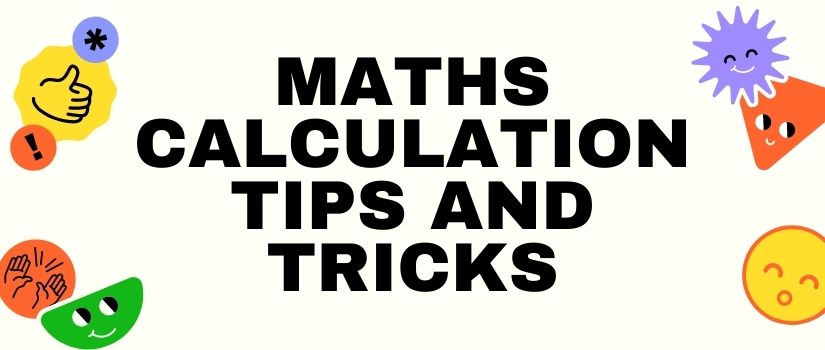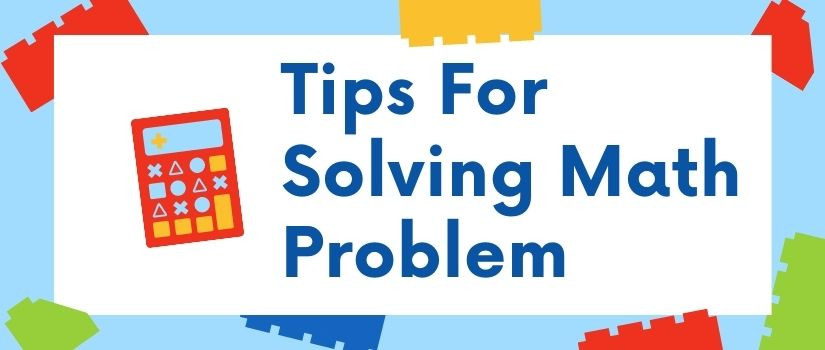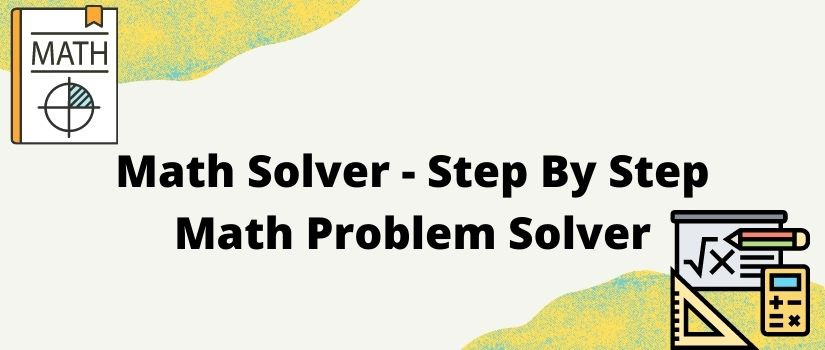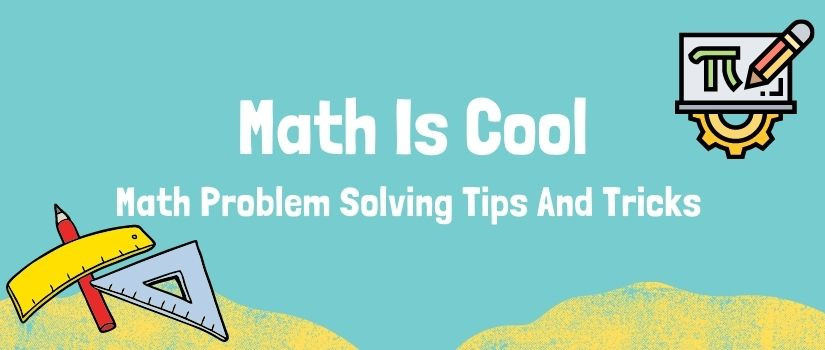See, no math homework can be completed with accuracy, if you have not learned and practice the basics well. Solving the number theory related problems need the same.
You need to understand the basics of number theory and then proceed to solve the related problems. You can take the math help sites to understand the basics of the theory. But searching the math homework help needs some research. You cannot select any site randomly. Read the reviews and select the best math tutor.
However, if you don't want to take online help and want to do your homework on your own, you have to approach the studies with the mindset that ‘math is cool'. The mindset helps to keep us on track. Now as our math topic is number theory. Let's get started with it. After understanding the basics of number theory, we will go on solving the maths questions, math homework answers, math problems, etc. all related to the number theory.
Let us first start by understanding what exactly is the number theory? Actually, it is the study of integers. All the number of theories aim to explore the relationships among all the types of integers. The questions relate to numbers, be it whole or rational numbers. Do you know what comprises the whole number theory? Actually, it is the four fundamental operations that we use i.e. add, subtract, divide, and multiply (+, -, /, and *).
There are a few topics that need a special mention whenever we talk about the number theory in math problems and match practice. Let us start by understanding some of them.
1. Primes (Sieve of Eratosthenes and prime factorization)
A positive integer is always called a prime number and the positive divisor of it is only itself or 1. This indirectly means that prime number – p is always greater than 1 (p>1). Do you know, number ‘1' is neither prime nor composite? You must know that prime numbers are infinite and standard proof of it is Euclid notes. Remember that the prime factorization helps to solve many a number theory problems.
Sieve of Eratosthenes is a major concept when we talk of prime. It helps to create a list of a few first prime numbers. It starts like this, you circle -2 and crosses out all those numbers which are multiples of two, after that, you circle 3 and then cross out all those numbers which are multiples of three. Now, you can repeat the same process with all other numbers. But the main drawback of the process is that it is not that much efficient to find the large primes.
Primes are not just limited. There are many primes and you need to learn what these primes are before you move further. The famous primes are:
- Fermat Primes
- Mersenne Primes
- Twin Prime
- Gaussian Primes
2. Composite Number:
As prime numbers are only divisible by itself or one. A composite number is divisible by at least one divisor which not 1 but different from one. Examples of the composite numbers are:
18 = 9*2 = 3*6 or 9=32
Note: Remember, every positive integer is either prime or composite.
3. Divisibility:
Actually, the ability of a number to get evenly divided by any other number is called its divisibility. For e.g. we can say that 9 divided by three is three or we can say that 9 is completely divisible by 3. The method of writing is 9/3. It means that 3 is a divisor of 9. There are certain divisibility rules that help to solve the math problems quickly. Some of them are:
- Even numbers are always divisible by 2.
- If the sum of digits of any number is divisible by 3, the whole number is divisible by 3.
- If a number is divisible by 2 and 3 both, the whole number is divisible by 6.
There are two concepts under the divisibility rule that needs a special mention here and those are:
Divisors: If n=kd, than d, is the divisor. It means to say that a number is a divisor of some number n if there is a natural number k and if it satisfies the equation n=kd. It also means that k=n/d and all are natural numbers.
Multiples: This is very simple to express. A multiple is the product of some given integer with another integer. It can be expressed mathematically as k=mn.
For e.g. There are two most common multiples:
(a) Common Multiple:
If we take two or more positive integers, the multiple which is common to those integers is called the common multiple.
(b) Least Common Multiple:
The least common multiple (LCM) is the smallest multiple of all the positive integers given. The mathematical representation of a set of numbers is {a1, a2,……, an }.
4. Base Numbers:
For understanding the base numbers, we have to understand our number system. There are two ways to express the base numbers: The decimal or base-10 number system. For e.g. take the number 54321. If we follow the number system depending on-base numbers, the number 54321 can be written as 5.104+4.103+3.102+2.101+1.100.
All the digits in the number 54321 are just the placeholders and indicate that what power of 10 they possess. The base is also referred to as radix also. It is denoted as a subscript. For e.g. in the number 5432110, 10 is the radix. The base number topics are also broad and can be divided into subtopics. The major topics related to base numbers are
- Common Bases
- Improper Fractional Base
- Converting Between Bases
5. Diophantine Equation:
Whenever you see an equation that relates the integer quantities, it is called a Diophantine equation. Mostly, the parametric form is used to establish the relationship between the integers.
The most common topics that relate to the diophantine equation are:
- Linear Combination
- Pythagorean Triples
- Pell Equations
- Sum of Fourth Powers
- Fermat's Last Theorem
6. Modular arithmetic:
This is a special kind of arithmetic that deals only with the integers and nothing else. Multiplication, Subtraction, Addition, etc. all are included in the modular arithmetic. The major topics which need to be mastered to learn modular arithmetic are:
- Motivation
- Residue
- Computation (Addition, subtraction, multiplication, and exponentiation)
- Congruence
All of these topics need extensive study to master them.
7. Factors:
To put it simply, factors are two whole numbers. When these numbers are multiplied together, they produce a third number. All the numbers have at least two factors, except 0 and 1. For e.g., the number 50 has 1,2, 5, 10, 25, 50 as factors. In total, number 50 has 6 factors.
The above discusses concepts that are just basic introductory topics. You have to dwell deeply into them for solving the number of theorem related math homework. Though you have to solve the problems by understanding the concept well, there are some shortcuts that can help you to complete number theory related homework fast. Though the shortcuts are endless, let us discuss a few important shortcuts.
The way to multiply large numbers in head
Suppose, there are two big numbers 98 and 94 and you have to multiply them. Now what you need to do is subtract both the numbers from 100 and then multiply them to get the last value. At the same time add those numbers that you get after subtracting from 100 and then subtract the value from 100 to get the first values of the answer. Let me explain you in the mathematical form here:
The problem is:
98 * 94 = ?
No, subtract both the numbers from 100 i.e.
98 (100-98=2) * 94 (100-94=6)
Now, add 2 and 6 i.e. 8.
Subtract 8 from 100 i.e. 92. So the first two values of the result are 92.
To get the last two values, multiply 2*6, which results in 12. So the last values of the result are 12.
The total result is 9212. Now open your calculator and check if it works.
The way to multiply any number by 11
The method is very simple. Add keep the numbers as it is and insert the added product of them in the middle. For e.g., if you want to multiply 35 with 11. What you need to do is add 3 and 5 i.e. 8. Put it in between 3 and 5. So the total result is 385.
In case the added product is bigger than 10. You should not write to them in the middle. But instead, keep the add one to the former value and keep the back value as it is. For e.g., if you want to multiply 47 with 11. If you add 4 and 7, the product is 11. Now instead of writing 4117, you need to write as (4+1)17 i.e. 517.
The way to convert Fahrenheit to Celsius and vice versa:
Centigrade to Fahrenheit: To convert temperature from centigrade to Fahrenheit, you don’t need to do any complicated calculation. You just need to multiply the correct value of the centigrade temperature with 2 and then add 30. Though the result is not exactly the same, it nears the correct one. The correct formula says that you must multiply the centigrade temperature with 1.8 and then add 32. But multiplying with 1.8 is somewhat complicated. So the formula is reduced to this to get near about temperature.
Fahrenheit to Centigrade: The formula works exactly the opposite. You need to subtract 30 from the Fahrenheit temperature by 30 and then divide it by 2. Isn’t it really easy?
The way to calculate the cube root of any number bigger than 4 digits:
The cube root seems complicated, but they are not actually so if you remember the cube roots of numbers from 1 to 10. What you need to do is note down the last digit of the number where you have to write down the answer. The last digit of the number is the last digit of the result as well.
After that, you need to ignore the three last digits of the number given. You have to observe the number that remains after ignoring the last three digits. Try to figure out which is the closest cube from the number 1 to 10. The closest number needs to be put before the last digit of the result. In this way, you get the result. For e.g., if your problem number to find out the cube root happens to be 42875.
Now what you need to do is note down the last digit of the given number i.e. 5. The number ‘5’ will be the last digit of the answer. Now, ignore the last three digits of the given number i.e. 875. Now the remaining figure is ‘42’, the closest cube to 42 is 27, which is the cube of number 3. So write down 3 before 5 to get the answer. So the cube root of the number 42875 is 35. The answer is 35.
The way to subtract any number from 1000 in mind:
Suppose, you want to subtract any number 754 from 1000. It may be that you will require a paper and pen for that. But the easiest way to do it in the mind is subtracting all the numbers of the given number from 9 and subtract the last number from 10.
Let me explain:
1000 – 754 = ??
What you need to do is:
Step 1: 9 - 7 = 2
Step 2: 9 – 5 = 4
Step 3: 10 – 4 = 6
So the answer is 246.
Conclusion:
The above-discussed tricks are just a glimpse of how one can solve a number theory problem easily. There are endless methods to make math homework and math problems easier for you. I will discuss all of them with you later. But remember, remembering the topics and tricks is the greatest math homework help. You will not have to search for any math tutor or math teacher if you practice them well. However, if you want assistance in learning the tricks we are here to help at the PostStudyQuery platform. There are a lot of teachers here to help you with it. You can get access to a number of math worksheets, math practice sheets, math test samples, math tricks, etc. from the PostStudyQuery. Just register and write to us.
Related Opinion

Speed can be a major game-changer in exams demanding quick solutions. Good command over calculation helps to decrease the time required to solve the problems. Here we are sharing a few ideas to boost your calculation speed. Hope it will be helpful for you.1. Maths concepts clarificationA.) VisualizeAs well as we know visual effects last longer, you should visualize the example first instead of doing it. It will help you to identify the pattern and thus develop tricks of your own. B.) DecideUnderstand the category of problems. For better understanding, your basics fundamentals should be clear, which will help you...

Solving a math problem seems extremely difficult to some, while it is not so. The problem-solving skill is not something with which a person is born, but it is cultivated over time with experience and constant practice. Although different math problems are solved differently, the general approach to solving any math problem can be the same. Remember, solving or doing math develops our critical and analytical thinking skills, which helps us to a great extent in the long run of life. Math problem solverThe basic difference between the amateur and experienced math problem solvers is that the experienced ones make...

What some students say about Math that it is the most uncomplicated subject. Others say it is worse than Rocket Science! You will encounter concepts of Trigonometry, Calculus Probability, Algebra, Math Range, Geometry, and Differential equations in high school. Sometimes the best of students are unable to figure out how to solve them. Math help then becomes essential for completing homework as well as improving grades. In such cases, take the help of Math tuition to solve your constant math woes. Math is Fun and is the best of all subjects. So, all those of you who want to major...

For some students, listening to the teachers in the class while they multiply and add innumerable numbers can sound uninteresting and tedious. However, this is not monotonous, in fact, it is cool. Just try to look at its beauty, and you will find it cool. Remember that the beauty of Maths is in the mind of the beholder. If one sets the mind that Math is FUN, he/she will really find it fun. How to make math funDo you know Math is more fun than sports, video games, reading books, and some other activities? Once you see it for what...



0+ homework tips Posts
0+ math tips Posts